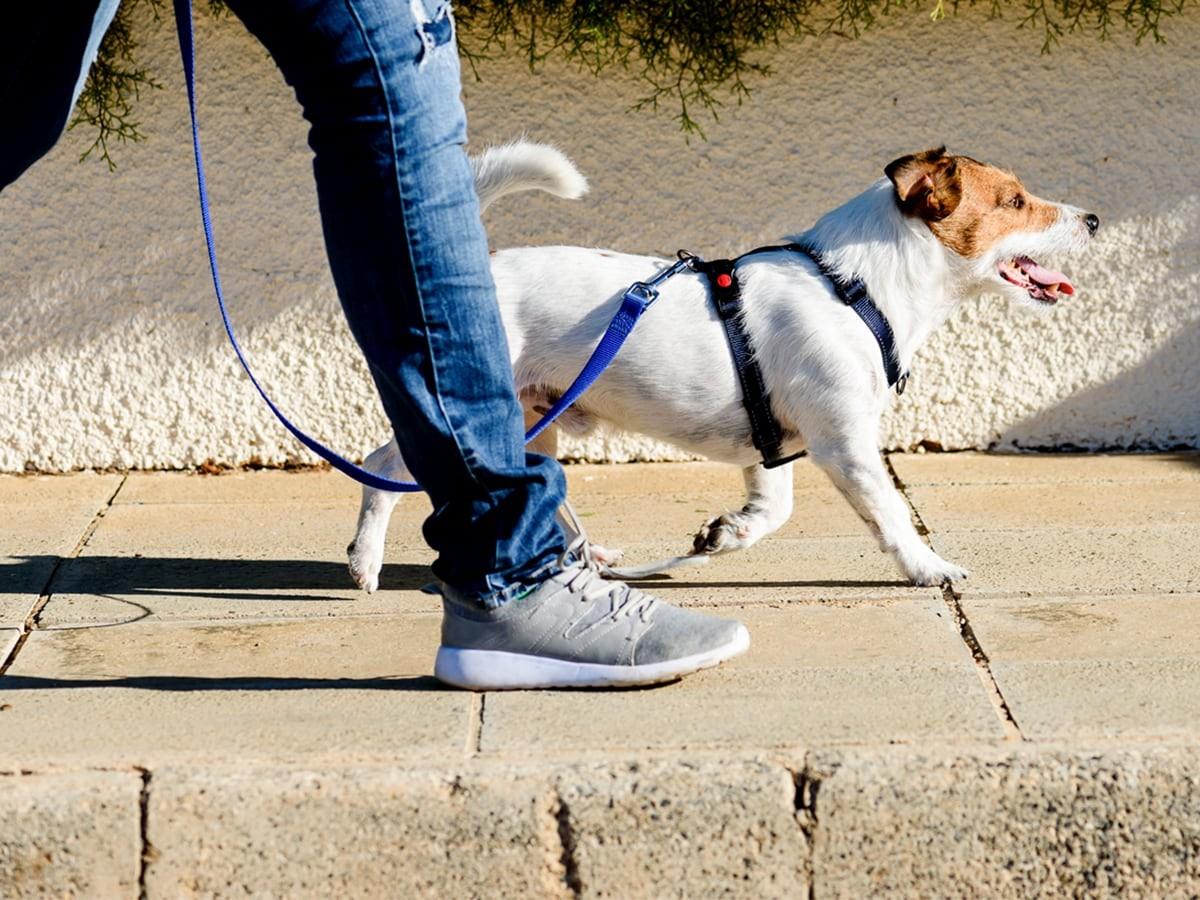4 Dog Walking Safety Tips
Walking your pup seems like a safe and healthy activity for both you and your pooch. And it is, for the most part. There are some risks and dangers you may encounter on your dog walk that you may not have considered. Potential hazards are more common than you may think.
So, while walking your dog can’t be avoided, risks associated with dog walking can.
Here are some common dangers, safety measures, and tips so you and your dog can enjoy your daily walks to their fullest.
Danger: Heat-In hot weather, it’s important to remember that for dogs, too much sun can be harmful.
Just like humans, dogs can get sunburned and their feet can get burned on hot pavement. If your pup has light fur and pink skin, consider protecting your dog by applying a dog-friendly sunscreen.
If it’s too hot for you to be barefoot on the pavement where you’re walking, it’s probably too hot for your dog’s paws, too. Heatstroke is another major concern in the summer months, and while your dog loves to be outside, remember that they’re wearing fur and are much more susceptible to getting overheated.
Safety Tip #1: Avoid walking your dog at high noon.
Prime dog walking times are generally early in the morning or in the evening, the coolest times of the day. Avoid harsh, direct sunlight as much as possible. Stay safe and cool by finding shade as much as possible when walking outdoors.
Remember that staying hydrated is key on hot days, so bring water for your pup on your walk just in case.
Danger: Eating toxic things-Depending on where you live and where you walk your dog, there are different types of risky toxins.
Litter can be an issue if you live in a city. Dogs like to sniff and pick things up and even eat things they find on the street. Is your dog a poop eater? While you always pick up your dog’s excrement, not everyone is as polite. Some dogs do dabble in doo-doo eating, so if your dog’s one of them this could be a hazard for you.
Safety Tip #2: Teach your dog to “leave it,” or “drop it.”
This way if they pick something harmful up and try to eat it, you can command them to stop. Always pay attention to what your dog is sniffing or chewing on.
If your dog is a poop eater, be on the lookout to avoid poop left (by an inconsiderate owner!) at all costs. Try to stay on a familiar path where you know that there are minimal things for your dog to get into.
Danger: Water-Does your pup like to drink from puddles or ponds?
Unfortunately, these stagnant waters can be extremely toxic. Lots of dogs see the nearest body of water and want to stop for a drink, but this practice is extremely harmful and can even be fatal.
Blue-green algae are highly toxic for dogs and can cause drooling, gastrointestinal issues, and neurological issues. Allowing your dog to wade in standing water can be dangerous as well, as muddy puddles and ponds can contain bacteria called leptospirosis which can be fatal. Keep your dog safe by avoiding drinking from puddles and ponds.
Safety Tip #3: Avoid allowing your dog to sip from standing water.
Also, don’t ever allow your dog to wade or swim in pond water that has any algae in it. Bring water with you as much as possible and if you see your dog headed to take a drink, provide them with fresh, clean water instead.
Danger: Other dogs-Your pooch might be extremely friendly and play well with others, however, that’s not the case with all dogs.
Encountering other dogs can be challenging regardless of your dog’s personality. Different breeds have very different dispositions and some can become aggressive when they interact with certain dogs.
An off-leash dog can be extremely frightening, even if they’re near their owner and have just run ahead, which your dog may interpret as aggression. Dog-fights are very serious and more common than you may think.
Safety Tip #4: Always keep your dog on a leash. You will not be able to control a situation if you don’t have control of your own dog.
Be aware of your surroundings and recognize if your dog feels agitated, threatened, or stressed in certain situations. Don’t automatically assume that another dog is friendly.
If you see a dog you think yours would like to say hello to, ask the owner first from a distance if the dog is friendly. Lastly, stay calm-your dog can sense your fear and tension and will behave accordingly.
If you’re exploring a new dog park for the first time, consider purchasing a retractable leash. That way, you can control your dog’s distance towards others.
Tips For Dog Parents
Dog walks are a great way to exercise, be outside, and bond with our dogs. Being aware of the potential dangers associated with walking your pup will help to ensure your walks are always safe and fun-filled.
Remember, a happy dog is a healthy dog. Therefore, having a vet and dog insurance helps dog walkers be more responsible with their doggie family members.
